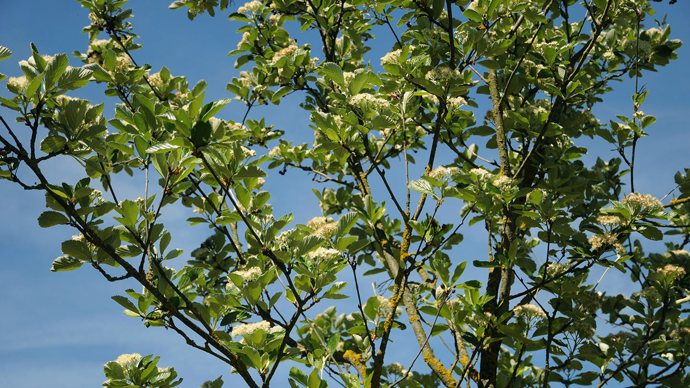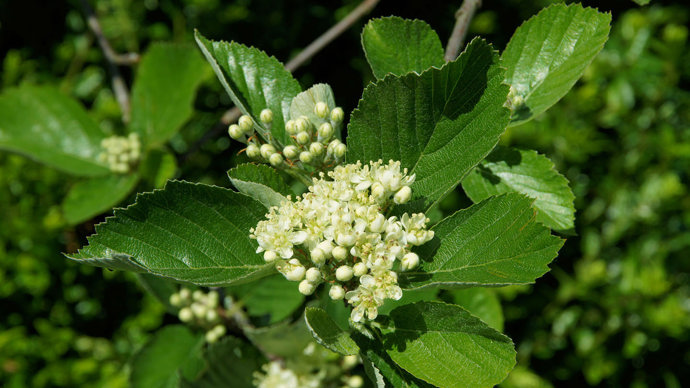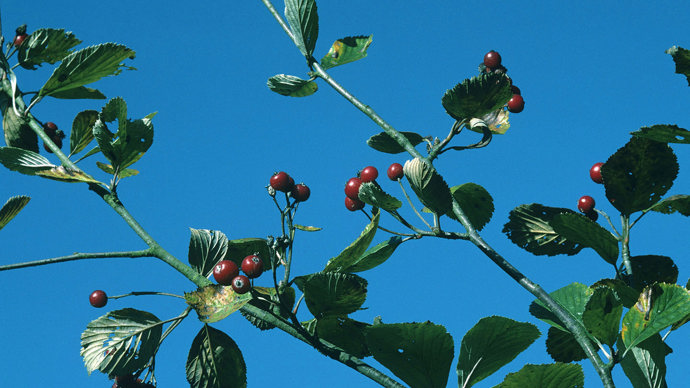Common names: rock whitebeam
Scientific name: Sorbus rupicola
Family: Rosaceae
Origin: native
Rugged yet charming, rock whitebeam clings to areas of rocky woodland and fissures in limestone cliffs. A parent species of the rarer Arran whitebeam, the rock whitebeam is becoming increasingly hard to find.
Common names: rock whitebeam
Scientific name: Sorbus rupicola
Family: Rosaceae
Origin: native
This deciduous tree or woody shrub has upright stems and oval, serrated mid-green leaves. It can reach 10m high.
Look out for: the densely white-felted underside of the leaves.

Credit: Zoonar Gmbh / Alamy Stock Photo
Elongated oval, 8–15cm long, mid-green and undivided, with the upper half sharply toothed (with teeth often curved forward) but un-toothed towards the base. The top side of the leaf is mid-green and the underside is densely white-felted with 6 to 11 veins. The leaves are around one- and-a-half to two-and-a-half times longer than wide and are mostly widest furthest from the stalk.

Credit: Zoonar Gmbh / Alamy Stock Photo
White, 12–16mm diameter and grow in loose clusters of white flowers in June to July, similar to those of rowan but larger.

Credit: Nature Photographers Ltd / WTML
Deep red berries, 12–15mm in diameter, broader than long, with numerous lenticels (holes that allow internal gases to escape) scattered over the surface. The berries fruit from September to November.
Common whitebeam (Sorbus aria) and hybrid whitebeams such as Arran whitebeam (Sorbus arranensis). However, rock whitebeam can be distinguished by its leaves which are mid-green, not grey like common whitebeam and unlobed, unlike Arran whitebeam’s.
The rock whitebeam is native to the UK and Northern Europe. It grows in rocky woodland, grassland, scrub and on cliffs, usually on limestone. Largely absent from the south-east of England and central and southern Ireland, the few trees which exist are scarce though slightly more frequent the further north you go into northern England and Scotland.
In Estonia rock whitebeam timber is overused in construction, which is one of the main threats to the country’s biodiversity.
Rock whitebeam is classified as least concern on the IUCN Red List of Threatened Species. Populations in the UK are not reproducing well and are lost through old age. In Northern Europe the main threats come from felling for construction and over or under grazing.
Rock whitebeam is an apomictic species which means it often reproduces asexually without the need for fertilisation, though it does need to be pollinated to set seeds.